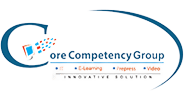How to Conduct a Skills Gap Analysis: A Step-by-Step Guide
Rohit Kumar
29 Aug, 2023

Learn how to identify, bridge, and monitor the skills gap for continuous growth and competitiveness URL
#SkillsGapAnalysis #StrategicPlanning #TalentManagement #HR #LearningAndDevelopment
A skill gap can be understood as the discrepancy between the capabilities employers are seeking and the abilities their employees possess. Recognizing and addressing such gaps is crucial to align the workforce with the organization's objectives and growth strategies. It can be achieved through a method known as a skills gap analysis, which can enhance employee development initiatives and inform hiring practices.
Step 1: Define Clear Objectives
Start by identifying your organization's needs and strategic goals. What skills are critical to achieving those goals? What competencies are currently in demand in your industry? Answering these questions will help you define the skill sets you need now and the ones you may need in the future.
The HR department can initiate this planning phase, often in collaboration with managers, to explain the process. Alternatively, the engagement of an external consultant could lend objectivity to the process and enable internal staff to concentrate on other pertinent tasks.
Step 2: Identify Key Skills
The next step is to discern the vital skills needed by your organization. It can be achieved by asking two key questions: Which skills do we value as a company? And what competencies do our employees need to perform their roles effectively, presently and in the future?
To answer these questions, examine your company's job descriptions, business goals, and organizational values, and consider any emerging skills that may become necessary. Employee surveys can also be used to identify perceived skills shortages, and this inclusive approach can foster a sense of contribution toward the organization's growth. Employers may use a rating scale for more effective evaluation, with clearly defined parameters, such as a 1 to 5 scale from novice to expert.
Step 3: Evaluate Current Skills
Assess the skills your employees currently possess. It can be achieved through several methods: surveys, interviews, performance reviews, and direct observation. Consider using a skill inventory tool, which can help streamline this process. Another approach involves creating a specific skills spreadsheet for each position, which can help identify gaps resulting from limited experience.
Step 4: Identify the Gap
The skills gap is the difference between the skills you need (from Step 2) and the skills your employees currently possess (from Step 3). This gap can be at the individual, departmental, or organizational levels. Identifying these gaps is critical to understanding your organization's current state and planning for its future.
Step 5: Develop a Plan to Bridge the Gap
Once you've identified the skills gap, the next step is to develop a strategy to bridge it. That might involve hiring new employees, retraining existing ones, or outsourcing specific tasks.
The right strategy will depend on various factors, including the gap size, the urgency to fill it, and the resources available to your company. Remember, the ultimate goal is ensuring your employees have the skills to help your organization achieve its strategic objectives.
Step 6: Implement and Monitor
After you've developed your plan, it's time to implement it. That involves implementing your identified strategies and monitoring their effectiveness over time. Regularly revisit your skills gap analysis to ensure your strategies are working and adjust them as necessary.
In conclusion, conducting a skills gap analysis is crucial to strategic planning. It helps ensure your organization has the right skills to achieve its goals and stay competitive in an ever-changing business environment. By following these steps, you'll be well on your way to conducting a comprehensive and effective skills gap analysis.




